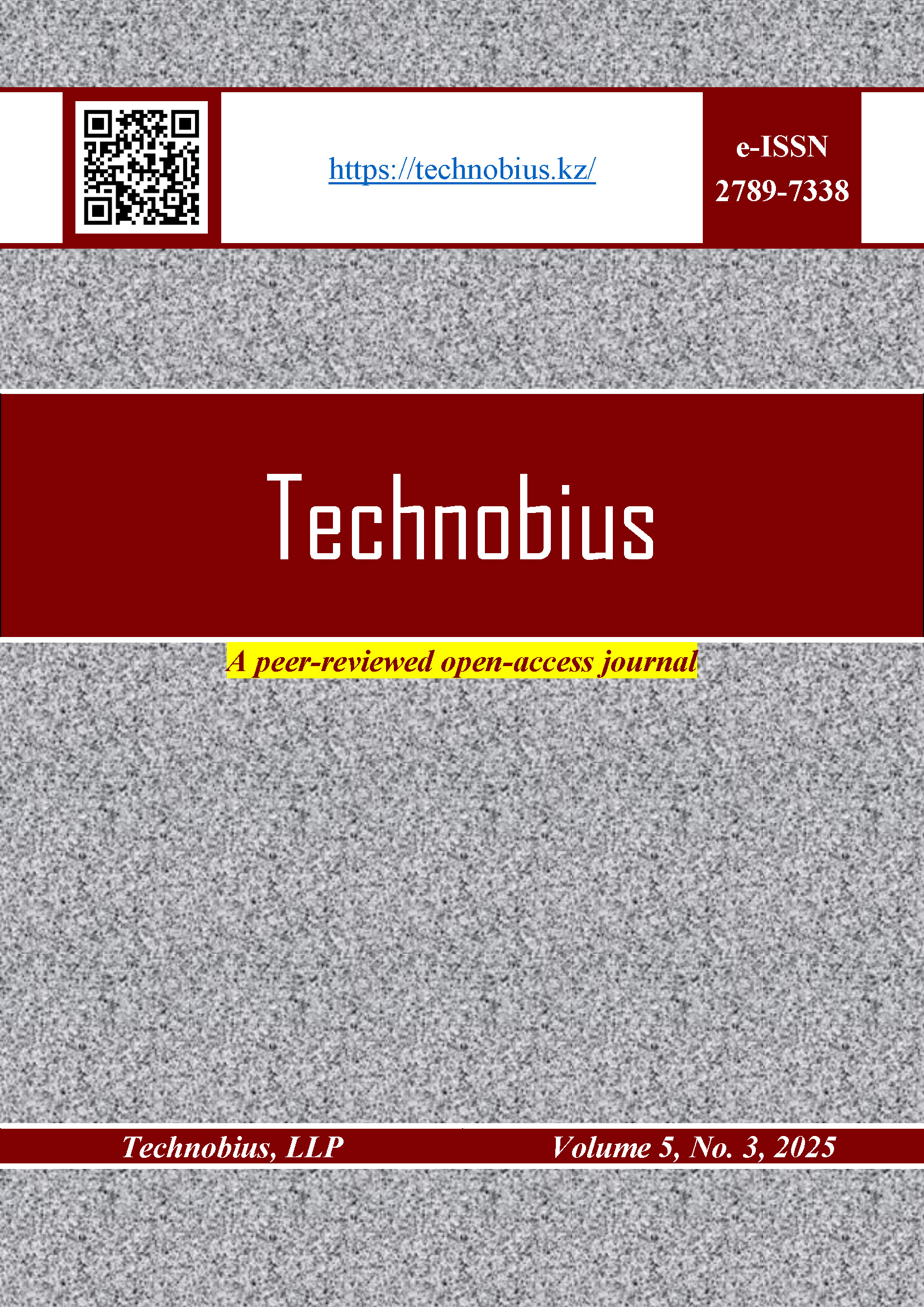Application of computational methods for real-time monitoring and structural integrity assessment of reinforced concrete structures
DOI:
https://doi.org/10.54355/tbus/5.3.2025.0085Keywords:
reinforced concrete structures, defects, operation, finite element method, sensorAbstract
This study develops and validates a method for real-time monitoring and structural integrity assessment of reinforced concrete facilities in Karaganda, Kazakhstan, integrating finite element modeling (FEM), machine learning (ML), and digital signal processing (DSP). Three pilot objects were analyzed: a three-span bridge, an 18-storey residential building, and a reinforced concrete highway section. FEM models built in ANSYS 2024 R1 were linked with calibrated sensor networks (strain gauges, accelerometers, thermocouples, tiltmeters, weather stations). Data processing was performed in MATLAB and SciPy, with ridge regression models (R² ≈ 0.85) used for defect prediction. Results showed close correspondence between calculations and measurements: deviations of 2% for the bridge (r = 0.98) and 4% for the building (r = 0.95) met the ≤5% accuracy target. The road section produced a 25% error (r = 0.90), mainly due to frost heave and heterogeneous traffic. Cost–benefit analysis indicated net efficiency within five years, with cumulative savings of 110–120 million KZT versus 67 million KZT in costs. The findings confirm the effectiveness of integrated digital monitoring for preventive maintenance, though further validation in different climates and materials is required.
Downloads
Metrics
References
A. Jiménez Rios, M. Georgioudakis, Y. Song, and S. Ruiz-Capel, “Editorial: Methods and applications in computational methods in structural engineering,” Front Built Environ, vol. 9, Dec. 2023, doi: 10.3389/fbuil.2023.1339541. DOI: https://doi.org/10.3389/fbuil.2023.1339541
M. Mehta, “AFF-YOLO: A Real-time Industrial Defect Detection method based on Attention Mechanism and Feature Fusion,” Oct. 19, 2023. doi: 10.21203/rs.3.rs-3449230/v1. DOI: https://doi.org/10.21203/rs.3.rs-3449230/v1
N. Knyazeva, E. Nazojkin, and A. Orekhov, “The use of artificial intelligence to detect defects in building structures,” Construction and Architecture, vol. 11, no. 3, pp. 18–18, Sep. 2023, doi: 10.29039/2308-0191-2023-11-3-18-18. DOI: https://doi.org/10.29039/2308-0191-2023-11-3-18-18
S. Coemert, B. Yalvac, V. Bott, Y. Sun, and T. C. Lueth, “Development and validation of an automated FEM-based design optimization tool for continuum compliant structures,” International Journal of Mechanics and Materials in Design, vol. 17, no. 2, pp. 245–269, Jun. 2021, doi: 10.1007/s10999-020-09506-w. DOI: https://doi.org/10.1007/s10999-020-09506-w
T. Cho and T. S. Kim, “Probabilistic risk assessment for the construction phases of a bridge construction based on finite element analysis,” Finite Elements in Analysis and Design, vol. 44, no. 6–7, pp. 383–400, Apr. 2008, doi: 10.1016/j.finel.2007.12.004. DOI: https://doi.org/10.1016/j.finel.2007.12.004
Y. Okazaki, S. Okazaki, S. Asamoto, and P. Chun, “Applicability of machine learning to a crack model in concrete bridges,” Computer-Aided Civil and Infrastructure Engineering, vol. 35, no. 8, pp. 775–792, Aug. 2020, doi: 10.1111/mice.12532. DOI: https://doi.org/10.1111/mice.12532
S. Dorafshan, R. J. Thomas, and M. Maguire, “Benchmarking Image Processing Algorithms for Unmanned Aerial System-Assisted Crack Detection in Concrete Structures,” Infrastructures (Basel), vol. 4, no. 2, p. 19, Apr. 2019, doi: 10.3390/infrastructures4020019. DOI: https://doi.org/10.3390/infrastructures4020019
E. Prasad, “Finite Element Method: Revolutionizing Engineering Analysis,” Structural Guide: Civil & Structural Engineering Knowledge Base. Accessed: Jul. 04, 2025. [Online]. Available: https://www.structuralguide.com/finite-element-method/
Z. West, “Simple Linear Regression: Modeling the Relationship Between Two Variables,” Alpharithms. Accessed: Jul. 04, 2025. [Online]. Available: https://www.alpharithms.com/simple-linear-regression-modeling-502111/
T. M. Atanackovic and A. Guran, “Hooke’s Law,” in Theory of Elasticity for Scientists and Engineers, Boston, MA: Birkhäuser Boston, 2000, pp. 85–111. doi: 10.1007/978-1-4612-1330-7_3. DOI: https://doi.org/10.1007/978-1-4612-1330-7_3
B. Rust and D. Donnelly, “The fast Fourier transform for experimentalists. Part III. Classical spectral analysis,” Comput Sci Eng, vol. 7, no. 5, pp. 74–78, Sep. 2005, doi: 10.1109/MCSE.2005.103. DOI: https://doi.org/10.1109/MCSE.2005.103
T. M. Peters and J. H. T. Bates, “The Discrete Fourier Transform and the Fast Fourier Transform,” in The Fourier Transform in Biomedical Engineering, Boston, MA: Birkhäuser Boston, 1998, pp. 175–194. doi: 10.1007/978-1-4612-0637-8_6. DOI: https://doi.org/10.1007/978-1-4612-0637-8_6
Published
How to Cite
License
Copyright (c) 2024 Beibit Akhmetov, Roza Serova, Saltanat Zhautikova

This work is licensed under a Creative Commons Attribution-NonCommercial 4.0 International License.








